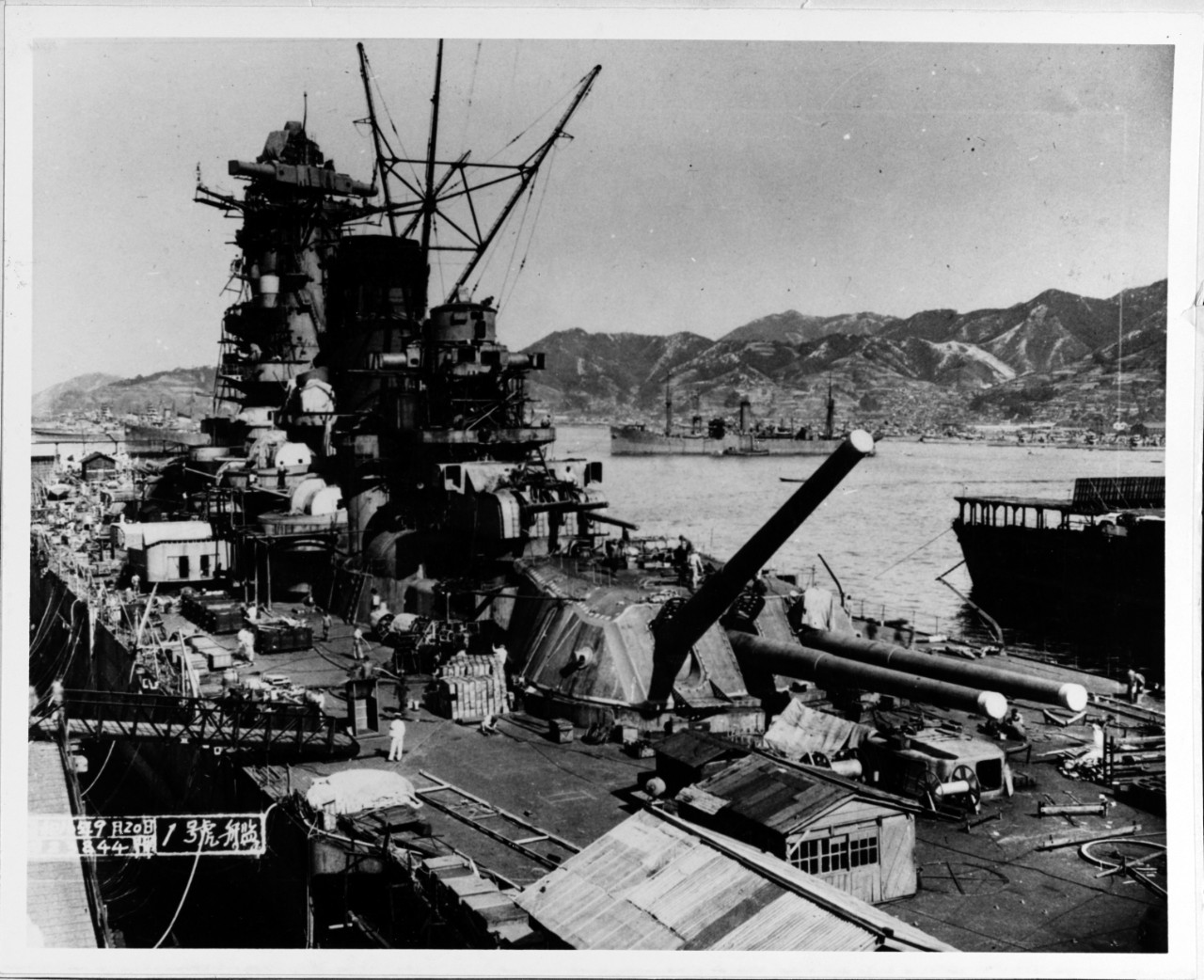
The 46 cm/45 (18.1") cannons used on the Yamato class were the most powerful guns ever installed on a battleship. While closely matched by the USA 16"/50 Mark 7 at long ranges, in a close-range engagement the penetration power of this weapon was unsurpassed. The muzzle blast is said to have been able to rip the clothes off personnel who were standing too close when the guns were fired, but this story is probably apocryphal. Blast pressure measured during trials at Kamegakubi test range was 7.0 kg/cm2 (100 psi) at a point 15 m (50 feet) in front of the muzzle. This was twice as high as that for the 41 cm guns used on the Nagato class.
These guns were officially designated by the Japanese as 40 cm/45 Type 94 (15.7 inch) in an effort to hide their actual size, which was a closely-guarded secret until after the end of World War II.
During design discussions in 1934-35, the option of building 50 caliber guns was seriously considered. These would have given an MV 40 mps (131 fps) higher than the 45 caliber gun and a 2,600 m (2,850 yards) greater maximum range when using the same projectile and propellant loading. Time of flight to 20,000 m (21,870 yards) would have been 1.9 seconds shorter with the longer gun. In the end, it was decided that the additional weight of these longer guns was not offset by their greater power and the Japanese decided to stay with 45 caliber guns.
Yamato is known to have fired at enemy ships on only one occasion. This was at the Battle off Samar in October 1944 against the U.S. Taffy 1 and Taffy 3 escort carrier groups, with rounds possibly hitting USS Gambier Bay (CVE-73). Musashi is known to have fired her guns in anger only once when she used "sankaidan" (incendiary shrapnel) anti-aircraft shells during the Battle of the Sibuyan Sea in October 1944. One of these reportedly exploded in the barrel, disabling the gun.
Dispersion was very small for these guns with spreads of 440 to 550 yards (400 to 500 m) at maximum range being recorded. American reports from the Battle of Samar also comment on the small patterns.
A total of 27 guns were produced, with the first one being completed in March 1938 and tested at the Kamegakubi proving grounds. Eighteen of these guns were lost with Yamato and Musashi, two test guns at Kamegakubi were demolished in November 1945 in accordance with the general disarmament orders of the U.S. Army and the remaining seven were found in various stages of completion on the beach in a cove north of Kamegakubi. Five of these remaining guns were destroyed while the last two, No. 23 and No. 27, were taken to Dahlgren Proving Grounds in Virginia, USA, for testing, arriving on 6 and 7 June 1946. Two slides for these guns were later delivered to Dahlgren on 7 May 1948. The guns and slides were reportedly cut up for scrap sometime during the 1950s. Two partially completed turntables intended for Shinano were also captured and later destroyed.
These guns had an unusually complex construction, perhaps reflecting the difficulty in manufacturing such a large caliber. The A tube, designated as 2A, had the 3A tube shrunk on for somewhat over half the length from the breech end. This assembly was then wire-wound and had a layer of two tubes shrunk on for the entire length, followed by a two-part jacket at the breech end. The various tube locating shoulders were fitted with Belleville spring washers, presumably to lessen stress concentration and potential "steel choke" problems. This feature was similar to many Vickers designs which used cannelured rings to reduce this problem. The inner A tube, known as 1A, was radially expanded into place by applying hydraulic pressure in three separate operations. The inner A tube was rifled after it was in place. There were also a short breech ring and a breech bush screwed into the 3A tube. The breech mechanism was a Japanese version of the Asbury type with a Welin breech block.
A great disadvantage of this type of construction was that the gun could only be relined by completely boring out the inner A tube. This was so expensive a process that it was considered to be more practical to simply replace a worn out gun with a new one, although it does not appear that either battleship was ever regunned during the war. This may be seen as a reflection of the brief combat life of these ships.
| Designation | Official Designation: 45 caliber Type 94 40 cm Gun
(40 cm/45 Model 1934) Actual Size: 46 cm/45 (18.1") |
|---|---|
| Ship Class Used On | Yamato Class |
| Date Of Design | 1939 |
| Date In Service | 1941 |
| Gun Weight | 363,000 lbs. (164,654 kg) with breech |
| Gun Length oa | 831.9 in (21.130 m) |
| Bore Length | 815 in (20.700 m) |
| Rifling Length | about 806 in (20.480 m) |
| Grooves | (72) 0.181 in deep x about 0.478 in (4.6 mm x 12.14 mm) |
| Lands | about 0.312 in (7.93 mm) |
| Twist | Uniform RH 1 in 28 |
| Chamber Volume | about 41,496 in3 (680 dm3) |
| Rate Of Fire 1 | 1.5 - 2 rounds per minute |
- ^At the loading angle of +3 degrees, a firing cycle of about 30 seconds could be achieved. However, this would equate to a range of no more than 6,560 yards (6,000 m). The additional elevation and depression times required to reach an elevation of 41 degrees increased the firing cycle by about 11 seconds. As can be seen in the Range Table below, most ship-to-ship actions would rarely exceed an elevation of 20 degrees, so an intermediate time of 35 seconds would seem to be reasonable for most battle-range engagements. See the Firing Cycle Table image below for more information.
| Type | Bag |
|---|---|
| Projectile Types and Weights | APC Type 91 1a : 3,215 lbs. (1,458.3 kg) 2a APC Type 1 1a: 3,219 lbs. (1,460 kg) 2a Common Type 0 HE 3a: 2,998 lbs. (1,360 kg) Common Type 3 IS 4a: 2,998 lbs. (1,360 kg) |
| Bursting Charge | APC Type 91: 52.6 lbs. (23.86 kg) TNA 5a APC Type 1: 52.6 lbs. (23.86 kg) TNA Common Type 0 HE: 136 lbs. (61.7 kg) TNA Common Type 3 IS: N/A |
| Projectile Length | APC Type 91: 76.9 in (195.35 cm)
APC Type 1: 81.0 inches (206 cm) Common Type 0 HE: 63.0 in (160 cm) Common Type 3 IS: 63.0 in (160 cm) |
| Propellant Charge | 794 lbs. (360 kg) 110 DC1 6a 7a |
| Muzzle Velocity 8a | APC Type 91: 2,559 fps (780 mps)
APC Type 1: 2,559 fps (780 mps) Common Type 0 HE: 2,641 fps (805 mps) Common Type 3 IS: 2,641 fps (805 mps) |
| Working Pressure | 19 - 20.3 tons/in2 (3,000 - 3,200 kg/cm2) |
| Approximate Barrel Life | about 150 - 250 rounds |
| Ammunition stowage per gun 9a | 100 rounds |
- ^1.11.2Type 91 shells were all 6/∞ crh with boat tail. The diameter of the bourrelet was 18.07 in (45.898 cm). The original Type 91 APC was L/4.25 or 76.9 inches (195.35 cm) long. The later Type 1 version was L/4.47 or 81 inches (206 cm) long. The main difference was the length of the windscreen, as the conic angle went from 23.5 degrees to a longer, sharper 21 degrees. Type 1 shells also introduced a dye bag, which slightly increased their weight over that of the Type 91. The base of the Type 1 was slightly different from the Type 91 as the original two driving bands were replaced by a single double-width band with a copper ring in the middle of the band. The modified type superseded the original in 1941, so these battleships may never have carried any but the newer shell. See below for photographs of Target Shells made from APC Type 91 shells, a dimensional sketch of the APC Type 91 and a comparison sketch of the APC Type 91 and APC Type 1 projectiles.
- ^2.12.2The weights given above for the APC Type 91 and APC Type 1 are my deductions. The lighter weight is found in many USN documents written shortly after World War II while more recent secondary sources show a slightly heavier weight. I believe that the lighter weight would be for the APC Type 91 while the heavier weight is for the APC Type 1 which differed from the Type 91 by having a longer ballistic cap and a dye bag.
- ^Common Type 0 HE was supplied with time fuzes for AA defense. US Naval Technical Mission to Japan report O-19 says that this round had an effective radius of 74.4 yards (81 m) but this seems to be optimistic.
- ^IS is my abbreviation for the Type 3 Common incendiary shrapnel round (sankaidan) intended for AA use. Fuzes for these were set in the shell handling room with fuze protectors used to prevent damage before loading. Type 3 Common may have made up as much as 40% of the outfit by 1944. See below for more information.
- ^Japanese TNA bursters were sensitive to shock and as a result Type 91 and Type 1 APC projectiles had about 1/3 to 1/2 of the cavity filled with a shock-absorbing liner. Although this reduced prematures, it also meant a thinner shell wall and post-war tests by the USN at Dahlgren showed that hits at high angles of obliquity would cause the projectile to breakup without penetrating. See the 20.3 cm/50 datapage for a cross-sectional view of an 20.3 cm APC Type 91 projectile showing the liner.
- ^110 DC1 propellant was 11.0 mm in diameter and 370 mm long (0.433 x 14.6 inches).
- ^The propellant charge was in six bags. Bags were made of wool until 1942 at which time silk ones were substituted. Bags had a 1.1 lbs. (0.5 kg) separate silk bag of gunpowder at one end.
- ^Smaller propellant charges were available for training and target rounds. These were designated as "Reduced" and "Weak" charges. "Reduced" charges gave about two-thirds of the normal service velocity and were rated at 0.5 ESR while "Weak" charges were rated at 0.06 ESR. No muzzle velocity is given for "Weak" charges. Reduced charges were about 3/4 the weight of a full charge while Weak charges were about 1/2 the weight of a full charge. For proofing purposes, there was also a "Strong" charge that was about 20% larger than a full charge. This was rated at 2.0 ESR.
- ^Each mounting held 300 rounds with 180 rounds stored in two handling rooms on the rotating structure and the remaining 120 in shell rooms. The practice was to feed projectiles from the lower handling room until the supply was exhausted and then feed from the upper handling room.
- The Yamato class were issued the following dye colors for their Type 1 APC shells:
Yamato: None (White)
Musashi: Green
As were most Japanese warships, Yamato and Musashi were provided with a special anti-aircraft incendiary shrapnel shell officially designated as 3 Shiki tsûjôdan (Common Type 3) and supposedly nicknamed "The Beehive," but this could be apocryphal. This round weighed 2,998 lbs. (1,360 kg) and was filled with 900 incendiary-filled tubes. A time fuze was used to set the desired bursting distance, usually about 1,000 meters (1,100 yards) after leaving the muzzle. These projectiles were designed to expel the incendiary tubes in a 20 degree cone extending towards the oncoming aircraft with the projectile shell itself being destroyed by a bursting charge to increase the quantity of steel splinters. The incendiary tubes ignited about half a second later and burned for five seconds at 3,000 degrees C, producing a flame approximately 5 meters (16 feet) long.
The concept behind these shells was that the ship would put up a barrage pattern through which an attacking aircraft would have to fly. However, these shells were considered by US Navy pilots to be more of a visual spectacular than an effective AA weapon.
| Elevation | Range | Striking Velocity | Angle of Fall | Time of Flight |
|---|---|---|---|---|
| 2.4 degrees | 5,470 yards (5,000 m) | 2,264 fps (690 mps) | 3.3 degrees | --- |
| 5.4 degrees | 10,840 yards (10,000 m) | 2,034 fps (620 mps) | 7.2 degrees | --- |
| 8.6 degrees | 16,400 yards (15,000 m) | 1,844 fps (562 mps) | 11.5 degrees | --- |
| 10.0 degrees | 18,410 yards (16,830 m) | --- | --- | 26.05 seconds |
| 12.6 degrees | 21,870 yards (20,000 m) | 1,709 fps (521 mps) | 16.5 degrees | --- |
| 17.2 degrees | 27,340 yards (25,000 m) | 1,608 fps (490 mps) | 23.0 degrees | --- |
| 20.0 degrees | 30,530 yards (27,920 m) | --- | --- | 49.21 seconds |
| 23.2 degrees | 32,810 yards (30,000 m) | 1,558 fps (475 mps) | 31.4 degrees | --- |
| 30.0 degrees | 39,180 yards (35,830 m) | --- | --- | 70.27 seconds |
| 40.0 degrees | 44,510 yards (40,700 m) | --- | --- | 89.42 seconds |
| 45.0 degrees
(max elevation of turret) |
45,960 yards (42,030 m) | --- | --- | 98.60 seconds |
| 48.0 degrees
(max range) |
46,050 yards (42,110 m) | --- | --- | 104.0 seconds |
| 50.0 degrees | 45,790 yards (41,870 m) | --- | --- | 106.66 seconds |
- ^The above range table is a merging of two data sets from "Naval Weapons of World War Two." "Anatomy of the Ship: The Battleship Yamato" says that the maximum ordinate obtained was 39,040 feet (11,900 m). Range is not given. "The Yamato Class and Subsequent Planning" says that the maximum ordinate was 39,580 feet (12,064 m) at a range of 45,940 yards (42,007 m).
- ^USNTMJ report O-45(N) says that no range tables for this gun were found and that the Japanese officers interviewed claimed that all such documents were destroyed in August 1945.
| Range | Side Armor | Deck Armor |
|---|---|---|
| 0 yards (0 m) | 34.01" (864 mm) | --- |
| 21,872 yards (20,000 m) | 19.43" (494 mm) | 4.30" (109 mm) |
| 32,808 yards (30,000 m) | 14.19" (360 mm) | 7.43" (189 mm) |
This data is from "Battleships: Axis and Neutral Battleships in World War II" for a muzzle velocity of 2,559 fps (780 mps) and is based upon the USN Empirical Formula for armor penetration.
| Range | Striking Velocity | Side Armor | Deck Armor | Angle of Fall |
|---|---|---|---|---|
| 21,872 yards (20,000 m) | 1,713 fps (522 mps) | 22.28" (566 mm) | 6.57" (167 mm) | 16.5 |
| 32,808 yards (30,000 m) | 1,558 fps (475 mps) | 16.38" (416 mm) | 9.06" (230 mm) | 31.4 |
This data is from "Anatomy of the Ship: The Battleship Yamato," but has been corrected for typographical errors in that publication.
| Designation | Three-gun Turrets: Yamato (3) |
|---|---|
| Weight | 2,730.2 tons (2,774 mt) |
| Elevation | -5 / +45 degrees 1d |
| Elevation Rate | 8 degrees per second 2d 3d |
| Train | about +150 / -150 degrees |
| Train Rate | 2 degrees per second |
| Gun recoil | 56.3 in (1.43 m) |
| Loading Angle | +3 degrees |
- ^These mountings had a unique sliding cross-head for the elevating cylinder anchor point. This could be set to allow either an elevation range of -5 to +45 degrees or a range +3 to +41 degree elevation. The advantage of this selection was that the latter setting meant that no locking pins had to be inserted to hold the guns at the loading angle, the operator merely kept the controls at the "depress" position until an indicator showed him that loading was complete. This sped up the loading cycle and, as shown in the range table above, cost very little in terms of maximum range.
- ^"US Naval Technical Mission to Japan report O-45 (N): Japanese 18" Gun Mounts" states that the planned rate of elevation was 6 degrees per second, but 8 degrees per second was obtained in practice.
- ^A Note on Sources: "Anatomy of the Ship: The Battleship Yamato" states in the text that the elevation rate was 10 degrees per second. However, Japanese sources agree with the 8 degree figure and this work makes extensive use of "US Naval Technical Mission to Japan report O-45 (N): Japanese 18" Gun Mounts" including using the Firing Cycle Table from that document that uses the 8 degree per second elevation rate. For these reasons, I believe that the 10 degree figure is an error.
- These turrets had two independent sets of training gear, only one of which was in use at a time. Each was driven by a 500 hp vertical swashplate motor driving a train of straight-toothed pinion gears. Guns were individually sleeved.
- The shell and handling rooms were above the magazines. These were located around both the upper and lower propellant handling rooms. The lower handling room supplied only the center guns while the upper handling room supplied the outer guns. 180 projectiles (60 per gun) were stored vertically on two levels of the rotating structure while the rest were in the fixed structure and fed only the lower shell handling rooms. A push/pull geared mechanism moved the shells around in these compartments.
- The gun axes were 137.8 in (350 cm) apart.
- Most references state that the center gun had a 0.080 second firing delay to reduce shell dispersion. This is from "US Naval Technical Mission to Japan report O-45 (N)." However, more recent works state that the center gun had a 0.300 second delay. This would result in a separation of about 755 feet (230 m) between the shells from the outer guns and the shell from the center gun.
- Each gun had its own pusher shell hoist and cordite cage hoist. Shells were delivered vertically to the gunhouse and then tipped over for ramming. The cylindrical flashtight charge container held all six charges in line, allowing a single rammer stroke to load the gun. Two auxiliary hoists were fitted in each turret. Both shells and propellant bags were hoisted vertically in suitable containers. Transfer of shell in the gunhouse was effected manually by overhead travelers and chain purchase.
- Armor thickness for the Yamato class as given in "Anatomy of the Ship: The Battleship Yamato" by Janusz Skulski:
Face: 25.6 in (65 cm)
Sides: 9.8 in (25 cm)
Rear: 7.5 in (19 cm)
Roof: 10.6 in (27 cm) - The following excerpt is taken from US Naval Technical Mission to Japan report O-45 (N):
The 46 cm (18-inch) triple mount was the first large mount ever designed and produced by the Japanese which was not practically identical with the large British mounts prior to World War I and built for the battleship KONGO. In almost every part of the 18-inch mount a complete departure from this old design was made. For shell and powder hoists the Japanese 18-inch mount [sic, but probably meant 16-inch mount] was copied, but, generally speaking, the mechanisms were unique. Compared with British and U.S. practice, (16-inch, 14-inch and 8-inch), the mount was simple in design. It had no complicated hydraulic safety interlocks and comparatively few mechanical ones. Reliance was placed on good drill to avoid accidents. Even taking into account the size of the gun, the general impression gathered is that an unduly large factor of safety had been allowed in the design of the turret machinery as a whole, resulting in a very heavy mount, the total revolving weight of one turret being 2,510 metric tons [2,470 tons].
A very satisfactory rate of fire was obtained for a gun of this size: 1.5 rounds per minute at full elevation. A maximum range of slightly under 46,000 yds was obtained with a 3,220 lb shell.
The most interesting features of the mount were (a) the method of stowing and moving shells about the shell and shell-handling rooms using a fairly simple, but bulky and heavy mechanism; (b) the powder cage and rammer, designed to enable a full charge to be loaded by a single rammer stroke; and (c) the attachment of the elevating piston rod to the slide which was designed to avoid the necessity for a complicated slide locking gear, and to reduce the loading cycle time by cutting out the time usually required for locking and unlocking the slide.
Other mechanisms worthy of note are as follows:
1) The powder bogie and mechanisms for transferring powder from the fixed to the moving structure.
2) The gunhouse bogie and rammer.
3) The wormless training gear, with its "coaster" gear substitute for the normal friction discs.
4) The electric cable leading-in gear.It was stated by the Japanese that considerable attention had been paid to flashtightness throughout the turret. Although this was probably not up to U.S. and British standards, it is difficult to give a definite opinion on this point without having seen a completed turret. The performance of the turret in service was considered by the Japanese to have been very satisfactory with the exception of the large quantities of lubricating oil, which the Japanese could ill afford, were required by the training and powder hoist gears. Spreads of salvos were reasonably small, (about 500 to 600 yards at maximum range). The blast effect, particularly on the bridge, was found to be very severe.
Without having seen one of these turrets in operation or even a completed turret, an opinion will not be expressed on its probable performance or its value as a weapon beyond that already given above. The statements of the Japanese, however, are considered to be well-founded.
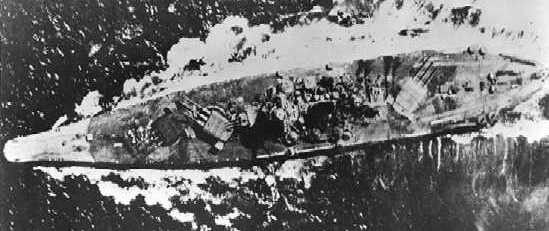


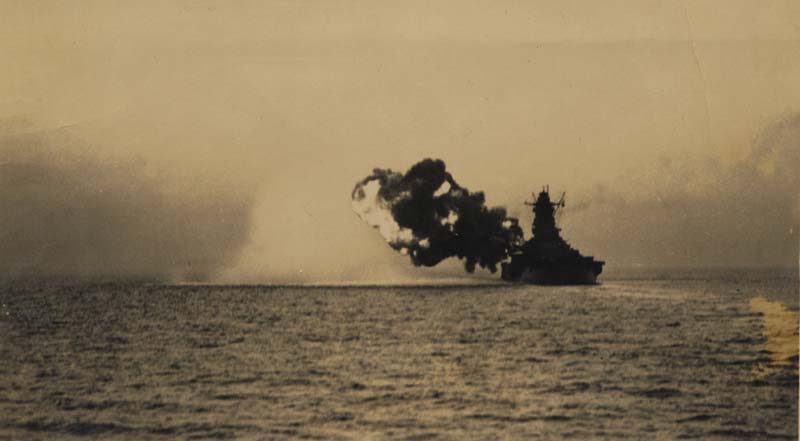
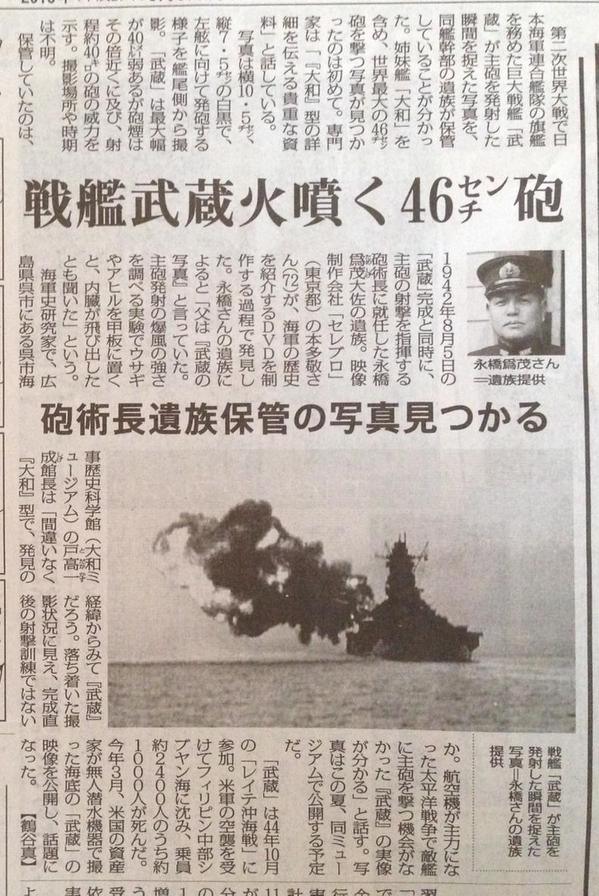
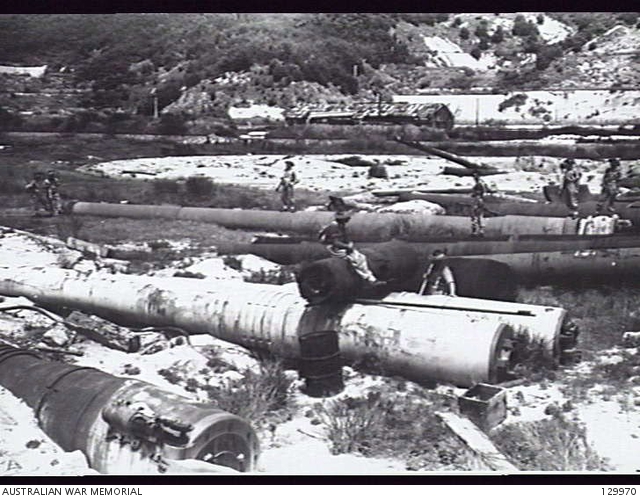
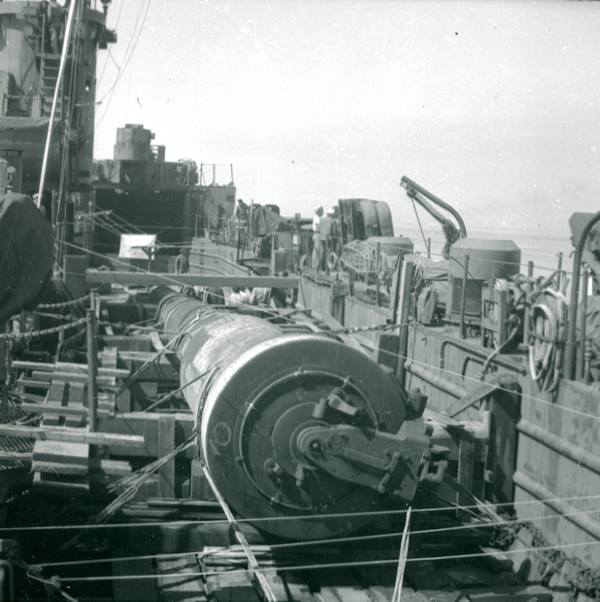
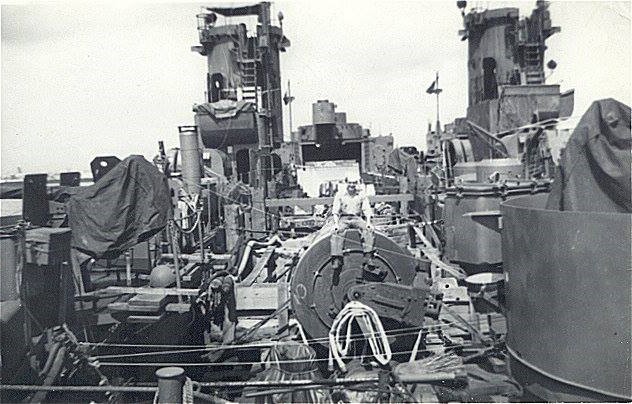
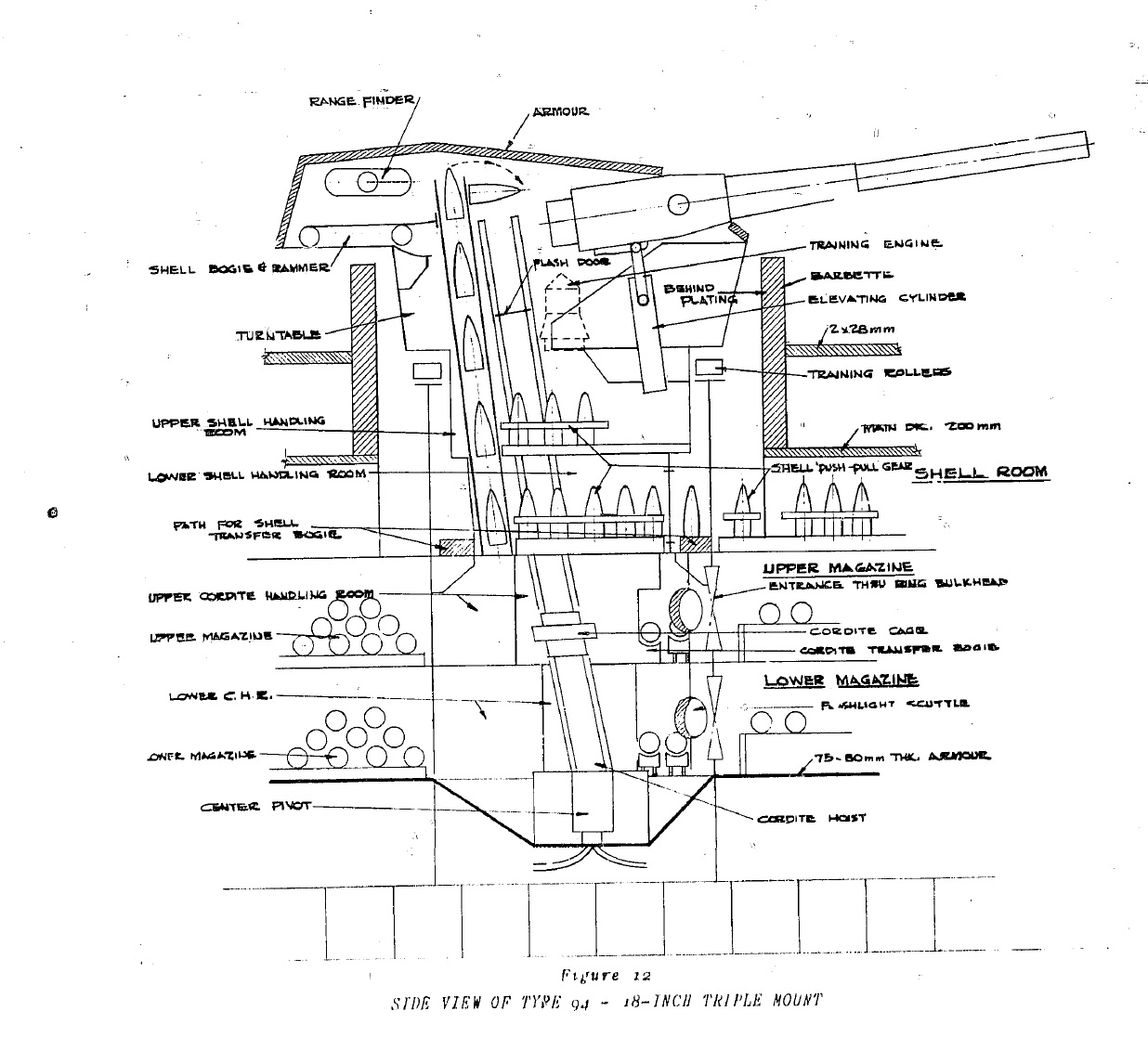
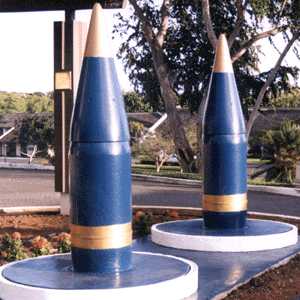
"These six foot 3,200 pound projectiles were the ammunition for the largest guns ever to go to sea. Aboard the Japanese Imperial Navy battleships Yamato and Musashi, these projectiles could be hurled more than 25 miles at 40 second intervals by 18 inch guns. The 68,000 ton Yamato, the largest battleship in the world, was completed December 1941. Her sister ship, Musashi, was completed eight months later. Neither ship reached five years of age, both saw action and were sunk during World War 2, thus ending the brief era of the 18 inch gun. These projectiles are unarmed target shells. They were originally discovered at the Yokusuka Navy base and placed on display at the US Naval Ordnance Facility, Yokusuka in 1962. These, and two similar projectiles on display in Hiroshima prefecture, Japan, are believed to be the only ones in existence today. They were brought to Hawaii in April of 1971."
Notes on these shells: The driving bands on these projectiles have been removed and replaced with a thin metal cover which has been painted a copper color. Nathan Okun believes that these are actually Type 91 APC projectiles which have been modified for target practice.
Special thanks to Mike Connelley who took several close-up pictures of these shells for Nathan to analyze.
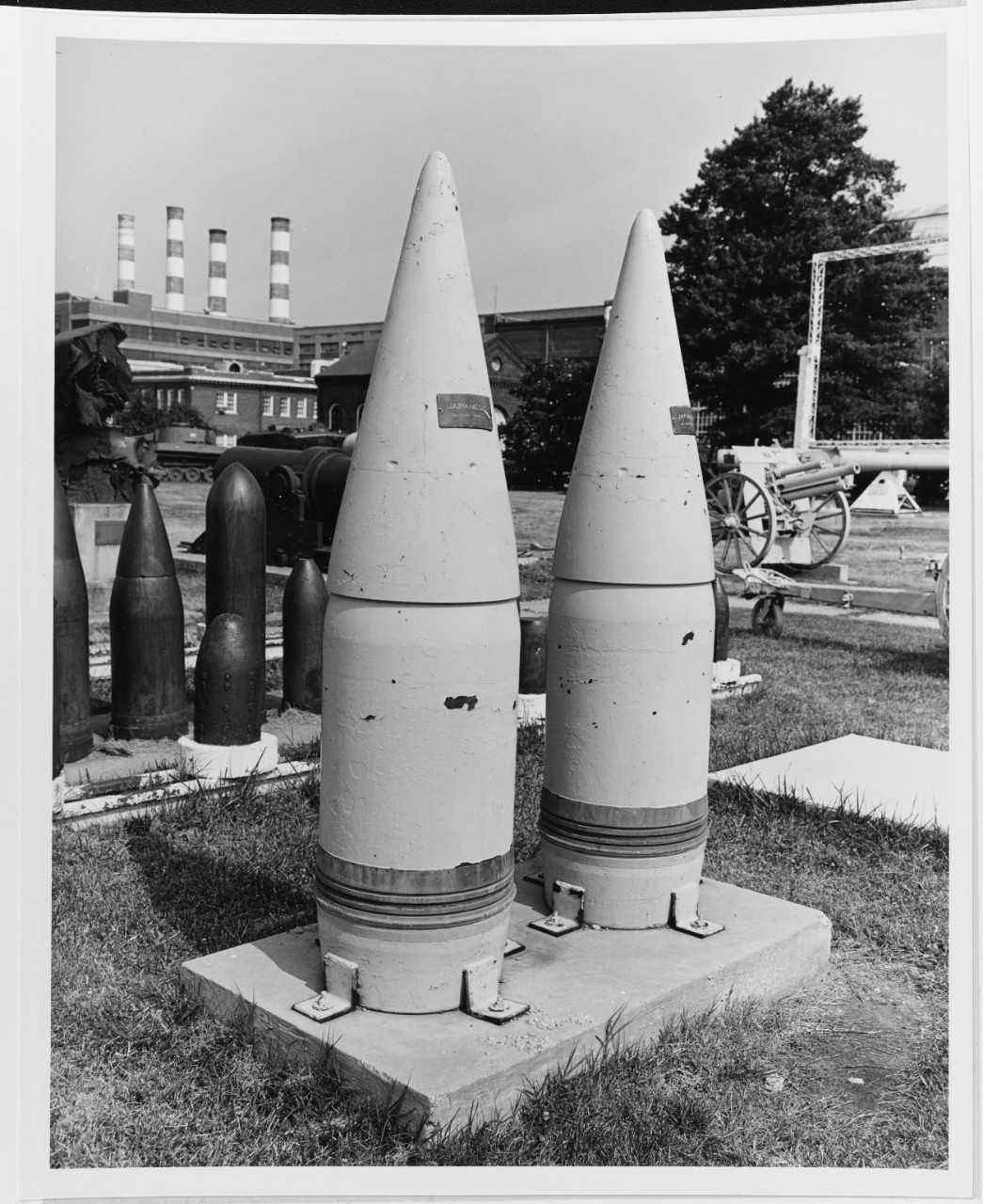
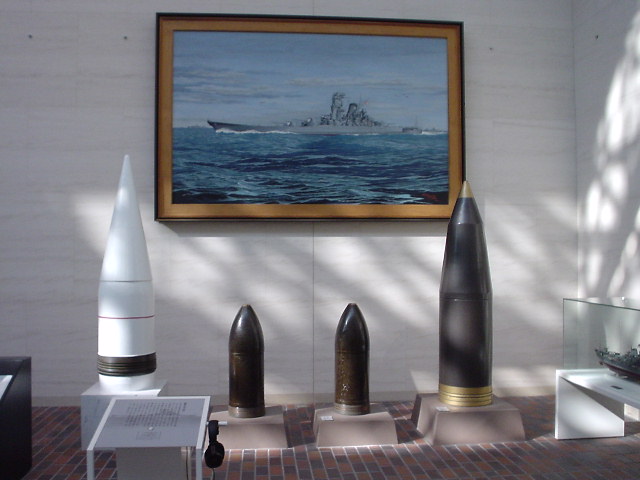
46 cm (18.1") Type 1 APC, two 12"(30.5 cm) projectiles for the battleship Mikasa and a 46 cm (18.1") HE. Picture courtesy of Taku Saito and from Museum Trip.
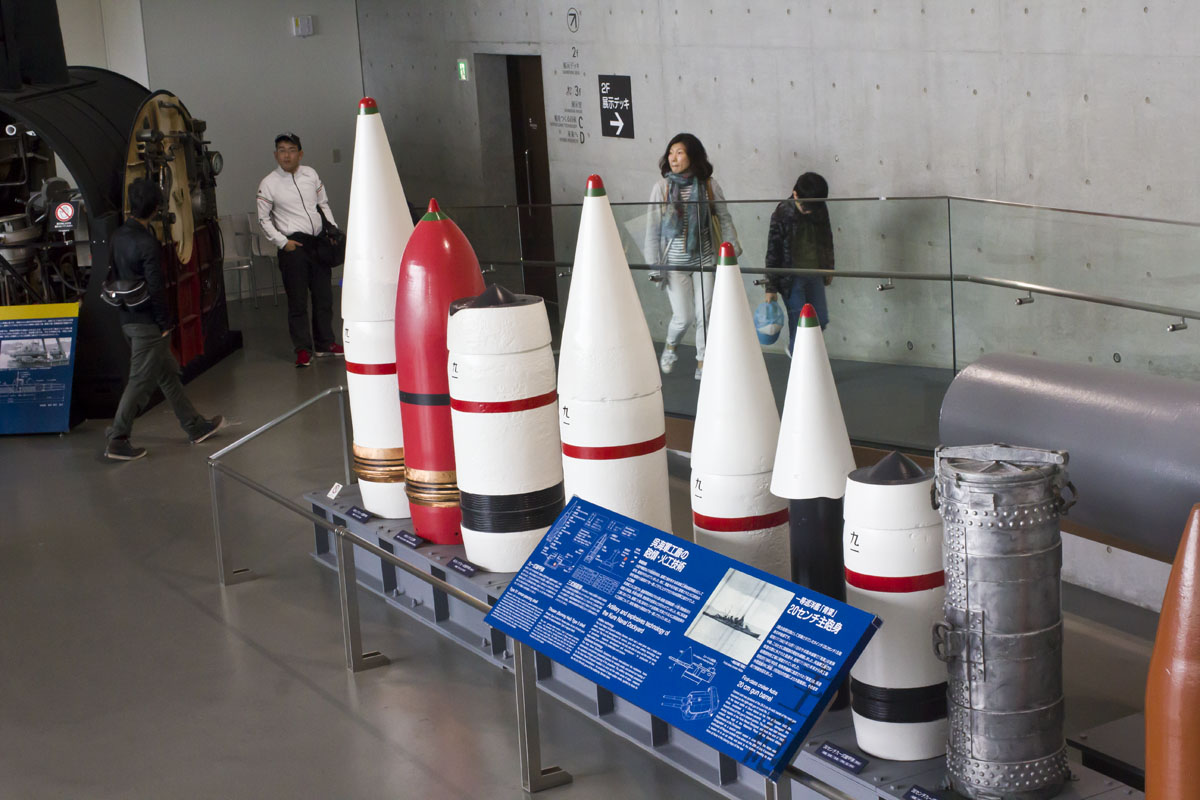
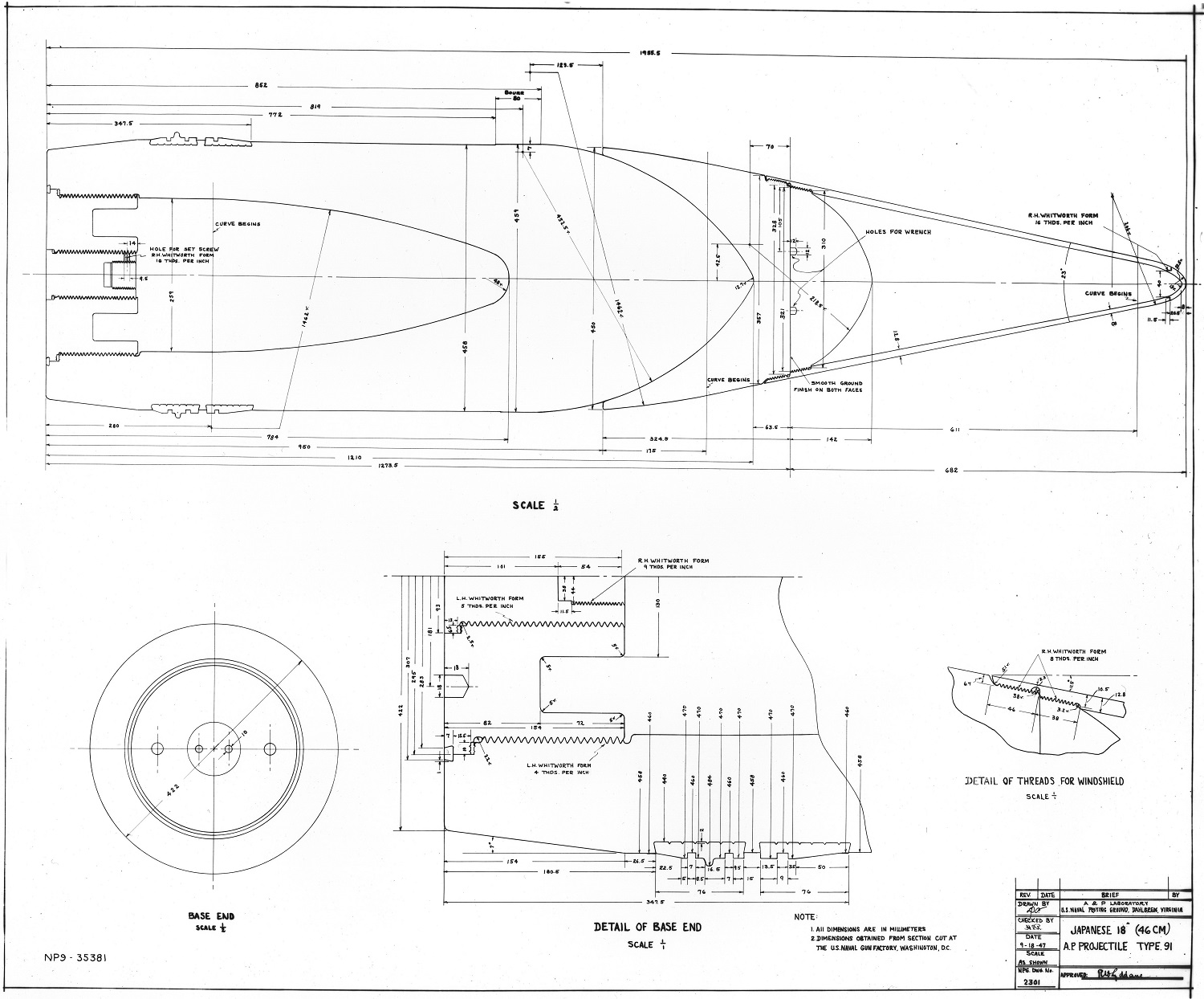
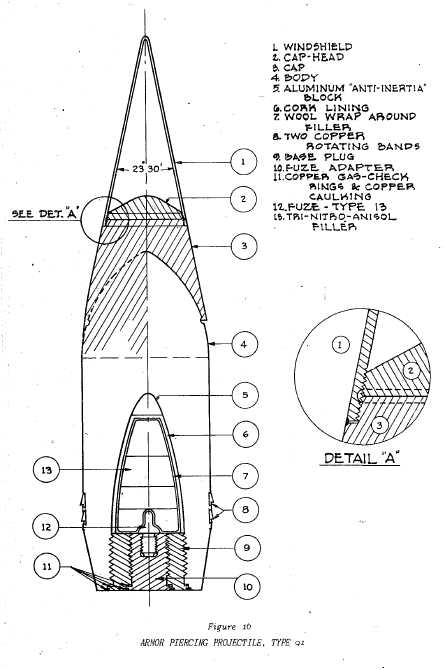
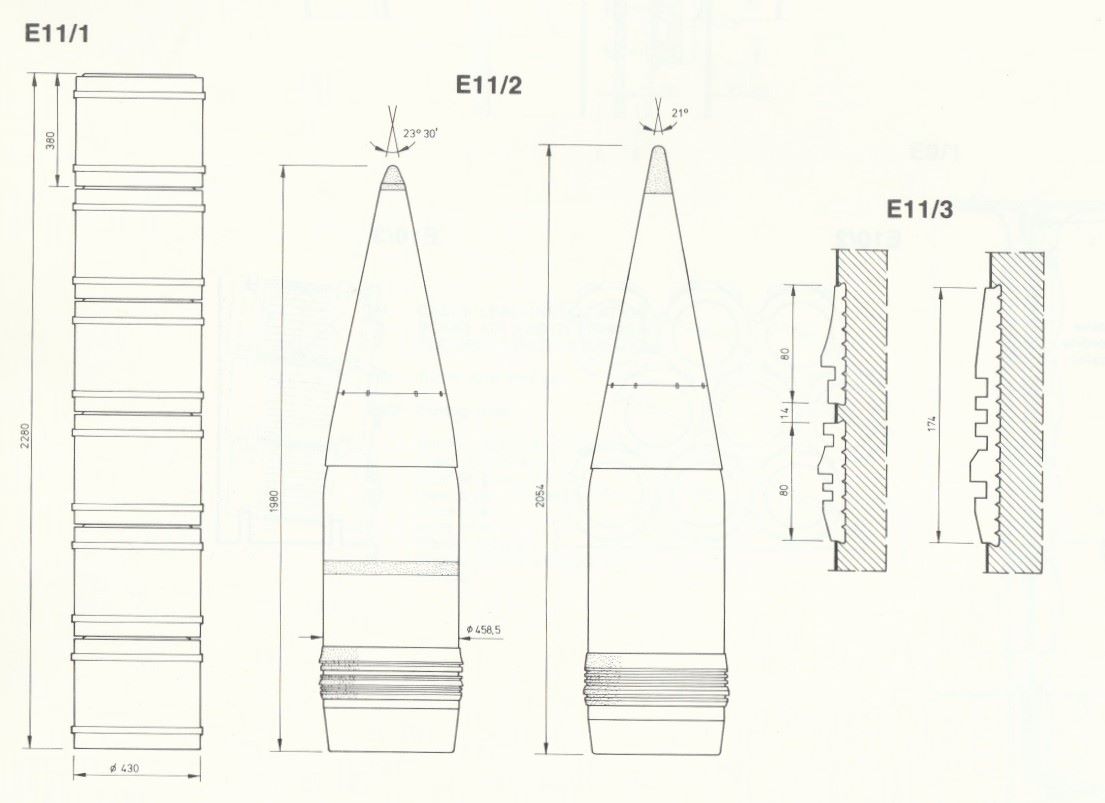
E11/2 - APC Type 91 & APC Type 1
E11/3 - Driving bands for Type 91 and Type 1
Sketch from "Anatomy of the Ship: The Battleship Yamato."
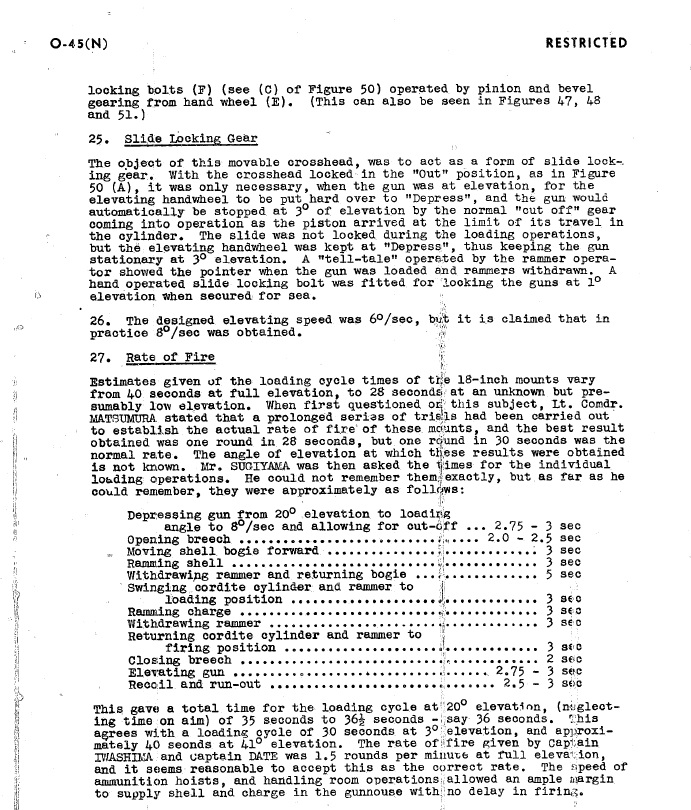
"Naval Weapons of World War Two" by John Campbell
"Battleships: Axis and Neutral Battleships in World War II" by W.H. Garzke, Jr. and R.O. Dulin, Jr.
"The Big Gun: Battleship Main Armament 1860-1945" by Peter Hodges
"The Yamato Class and Subsequent Planning" by Hans Lengerer and Lars Ahlberg
"The World Wonder'd: What Really Happened Off Samar" by Robert Lundgren
"Anatomy of the Ship: The Battleship Yamato" by Janusz Skulski
---
US Naval Technical Mission to Japan report O-19: Japanese Projectiles General Types
US Naval Technical Mission to Japan report O-45 (N): Japanese 18" Gun Mounts
NPG Report No. 269: Ballistic Test and Metallurgical Examination of Japanese 8", 14", 16" and 18" Armor Piercing Projectiles
---
Special help from Mike Connelley, Nathan Okun, Robert Lundgren and Richard Worth
Photographs and data on Gun No. 23 from LSM-362 and used here by the kind permission of Jack H. Carter, Jr.
23 April 2007 - Benchmark
27 May 2012 - Updated to latest template
08 January 2013 - Added note about incomplete guns and photograph of incomplete guns on beach
24 August 2014 - Added Turret Armor note
16 May 2015 - Added photograph and newspaper article showing Musashi firing
11 July 2015 - Added splash colors
27 August 2015 - Redid photograph of guns on beach and added link to source
01 November 2015 - Added photograph of projectiles
15 December 2015 - Minor changes
08 June 2016 - Converted to HTML 5 format, added photograph of Yamato at Truk
31 October 2016 - Added detail on ammunition handling
10 May 2017 - Added photographs and data on guns transported to Dahlgren, Virginia
04 June 2018 - Reorganized notes
15 October 2018 - Corrected elevation rate and added sketch of triple mount and firing cycle table
21 March 2019 - Added note regarding time fuzes on Common Type 0 HE
30 May 2019 - Added notes about blast pressure, 50 caliber gun, dispersion, propellant grain size, propellant
charge sizes, ESR and center gun delay time
30 April 2020 - Minor changes for clarity and ease of use
29 September 2023 - Fixed broken link to point to Wayback Archive
09 December 2023 - Added sketch of Type 91 APC
19 April 2024 - Minor formatting changes
16 January 2025 - Revised ammunition section notes, updated APC burster weight
14 March 2025 - Revised range tables
